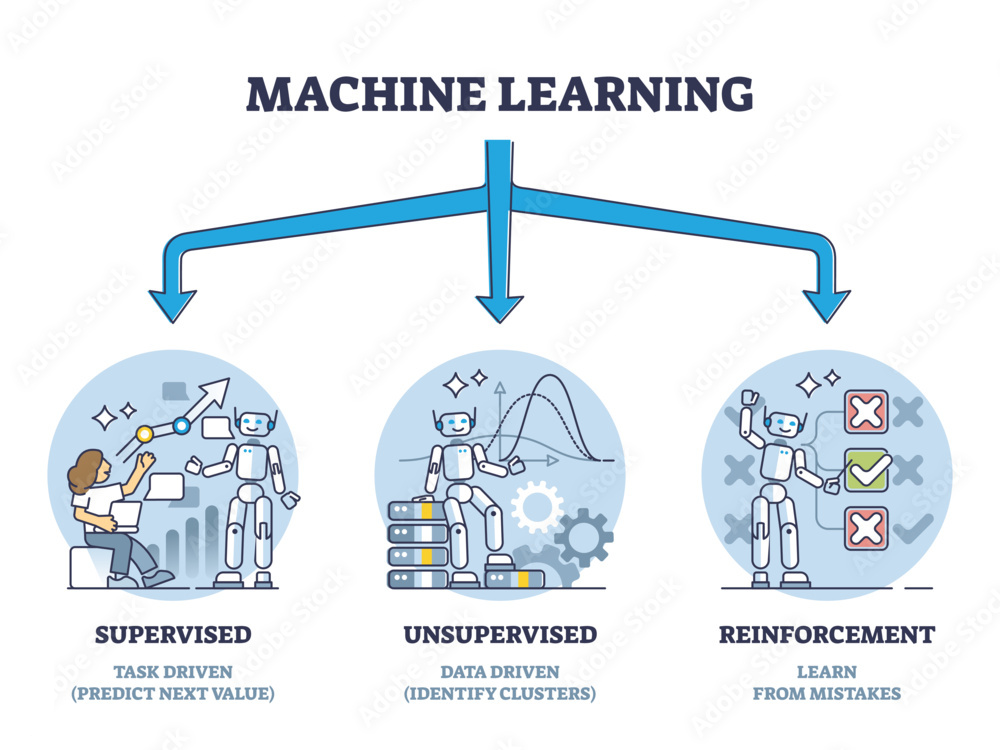Types of Machine-Leaning
1. Supervised Machine Learning:
In supervised learning, the algorithm learns from labeled data, meaning each input is associated with a corresponding output. The goal is to learn a mapping function from input to output, so that when given new inputs, the algorithm can predict the correct output. Examples of supervised learning tasks include classification (assigning labels to input data) and regression (predicting continuous values).
Examples: Email spam detection, image classification (e.g., cat vs. dog), predicting house prices based on features.
2. Unsupervised Machine Learning:
In unsupervised learning, the algorithm learns from unlabeled data, meaning there are no predefined output labels. Instead, the algorithm looks for patterns, structures, or relationships in the data. Unsupervised learning can be used for tasks such as clustering (grouping similar data points together) and dimensionality reduction (reducing the number of features while preserving important information).
Examples: Customer segmentation, anomaly detection, topic modeling.
2. Unsupervised Machine Learning:
In unsupervised learning, the algorithm learns from unlabeled data, meaning there are no predefined output labels. Instead, the algorithm looks for patterns, structures, or relationships in the data. Unsupervised learning can be used for tasks such as clustering (grouping similar data points together) and dimensionality reduction (reducing the number of features while preserving important information).
Examples: Customer segmentation, anomaly detection, topic modeling.
3. Reinforcement learning:
The algorithm learns by interacting with an environment to achieve a goal. The algorithm receives feedback in the form of rewards or penalties based on its actions, and its objective is to learn the optimal policy (sequence of actions) to maximize cumulative reward over time. Reinforcement learning is often used in scenarios where there is no labeled data available, and the agent learns through trial and error.
Examples: Training autonomous agents (e.g., robots or game-playing algorithms), optimizing resource allocation in dynamic environments, and controlling processes such as industrial automation.
Additionally, there are other variations and combinations of these main types, such as:
- Semi-supervised Learning: This involves a mix of labeled and unlabeled data for training. Semi-supervised learning algorithms aim to leverage the benefits of both supervised and unsupervised learning.
- Self-supervised Learning: Here, the model generates its own labels from the input data without human intervention. This is often achieved by predicting certain parts of the input from other parts.
- Transfer Learning: In transfer learning, knowledge gained from training on one task is applied to a different but related task, typically by fine-tuning a pre-trained model on a smaller dataset.
- Deep Learning: Deep learning is a subset of machine learning that involves neural networks with many layers (deep architectures). Deep learning has shown remarkable success in various tasks such as image recognition, natural language processing, and speech recognition.


